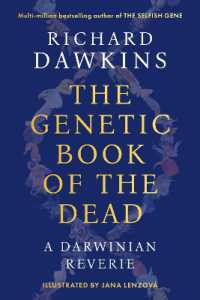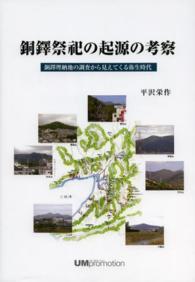- ホーム
- > 洋書
- > 英文書
- > Science / Mathematics
Full Description
Classic Indian texts and Vaastupurusha Mandala are not often discussed in the western discourse on urbanism, even while much of these predate the commonly taught European writings. This book sheds light on some of those forgotten concepts, thus making the lesser discussed classic Indian town organization ideas accessible to architecture, landscape, and urban planning students worldwide. The resonance of these concepts in present times are reviewed through case studies of select Hindu temple towns in India. Furthermore, the author underscores the formal abstraction of the classic Indian Mandala and transplants the discourse from sociology to socio-ecologically adept trans-disciplinary design thinking. The creative interpretations offer a premise to start revising classic models for current practice to influence the urbanism and ecology of a place in accordance with the changing climate.
Contents
Chapter1. Introduction and Methodology.- Chapter2. Ancient Indian Design and Town Planning Principles as a Frame for Case Studies.- Chapter3. Other Interpretive Frameworks.- Chapter4. Shiva Temples.- Chapter5. Deliberations.








